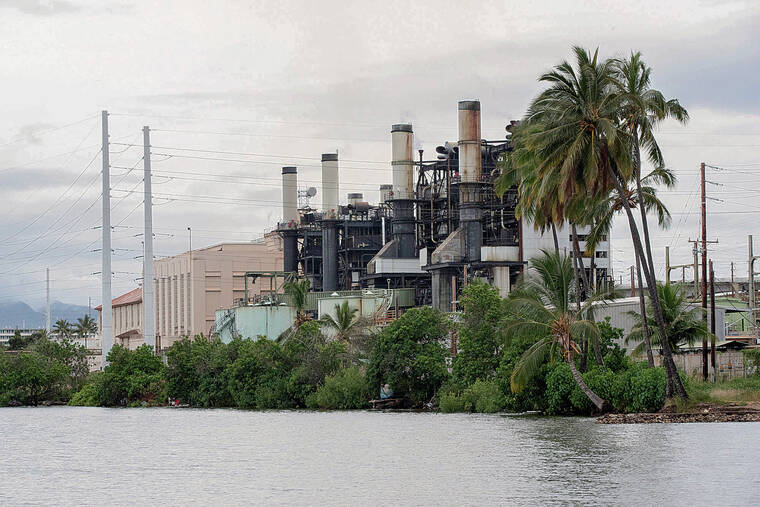Oil-fired power plant proposed for conversion

CINDY ELLEN RUSSELL / CRUSSELL@STARADVERTISER.COM
Hawaiian Electric has proposed to convert its 85-year-old Waiau Power Plant, at top, in Pearl City to run on other fuels including biodiesel and potentially hydrogen.

CINDY ELLEN RUSSELL / CRUSSELL@STARADVERTISER.COM
Above, signs at the gate to the power plant warn against trespassing.


Hawaiian Electric is seeking to redevelop an 85-year-old power plant in Pearl City as part of meeting a state goal for a 100% renewable energy supply by 2045.
The regulated utility company announced Thursday that it wants to replace all six aging oil-fueled generators at its Waiau Power Plant with smaller and more efficient generation units running on other fuels including biodiesel and potentially hydrogen.
Approval of such a plan will be up to the state Public Utilities Commission, which will consider competing proposals by independent power companies also seeking to be part of one big phase of Hawaii’s ongoing transition to 100% renewable energy production.
Because of the competitive-bidding process, Hawaiian Electric declined to share some details of its proposal, including the size of a new power plant in Waiau and cost to ratepayers.
The company said reusing much of the plant’s existing infrastructure would provide cost savings and minimal community impact.
Hawaiian Electric also said its envisioned new generation units proposed for Waiau could serve as firm backup power when variable resources like solar and wind aren’t available.
Don't miss out on what's happening!
Stay in touch with breaking news, as it happens, conveniently in your email inbox. It's FREE!
The existing units at Waiau take hours to start after stopping because they are steam generators fueled by oil and built to run continuously.
Mike DeCaprio, vice president of power supply for Hawaiian Electric, said in a statement that the proposal represents the “most impactful transformation” of the utility company’s generation infrastructure in decades.
“Some of these oil-fired boilers were built just after World War II and while they’ve served us reliably for decades, they don’t have the flexibility and fast-start capability we need with our expanding portfolio of solar and wind resources,” he said.
The 500-megawatt Waiau plant is the second-largest power production facility on Oahu. Only the utility company’s oil-fired Kahe Power Plant in Waianae is bigger, at 650 megawatts.
Two generation units at Waiau were built in 1947 and 1950, and they are already scheduled to be decommissioned and removed over the next several years.
Hawaiian Electric said the other four Waiau units, built between 1959 and 1968, will be decommissioned and removed in phases through the end of the decade as new power generation resources come online.
If the company’s plan is approved, initial replacement generation units would be ready for use in 2029 under the proposal.
The PUC is expected to select winning proposals in October in response to a request issued in January seeking bids to provide both variable and firm power production on Oahu and Maui.
Hawaiian Electric, as the electric grid operator on Oahu and Maui, published the request for the bids in a process being overseen by an independent observer and the PUC.
For Oahu, between 300 and 500 megawatts of renewable firm power is being sought by 2029 followed by an additional 200 megawatts by 2033. At least 965 gigawatt-hours of variable renewable energy that can be controlled by the utility company also is being sought on Oahu by 2027.
For Maui, at least 40 megawatts of renewable firm power is being sought along with at least 425 gigawatt-hours of variable renewable energy that can be controlled by the utility company by 2027.
Hawaiian Electric, which also is the power utility operator on Hawaii island, Molokai and Lanai, received 32% of power from renewable sources in 2022.




